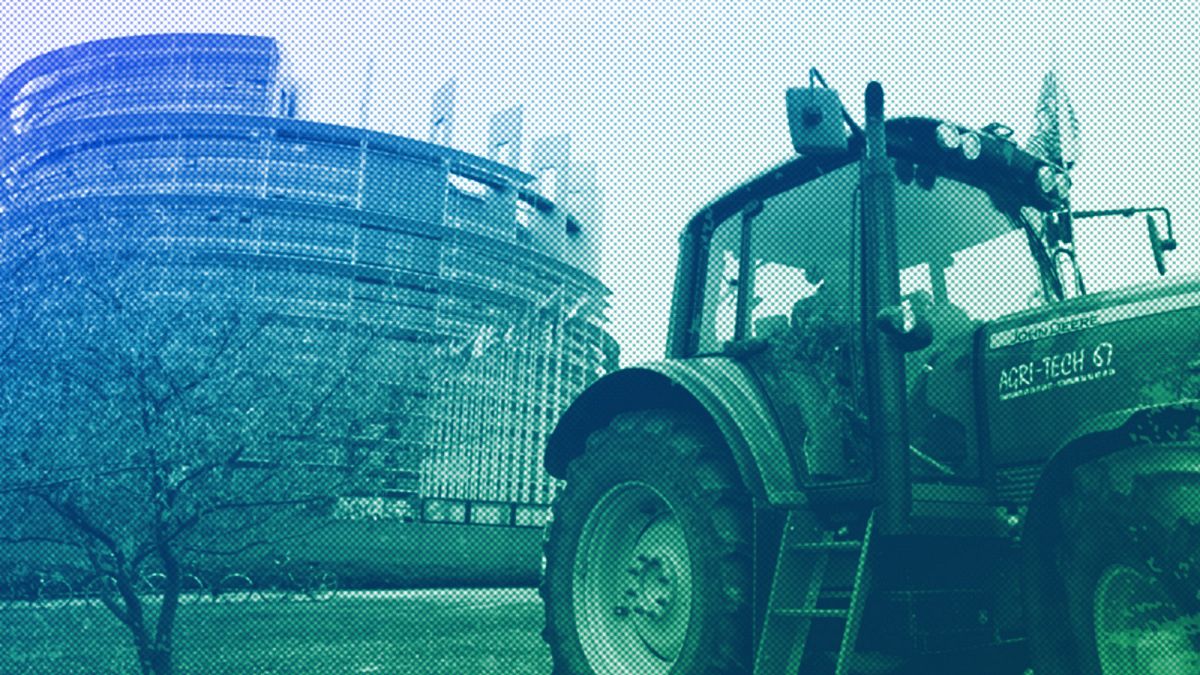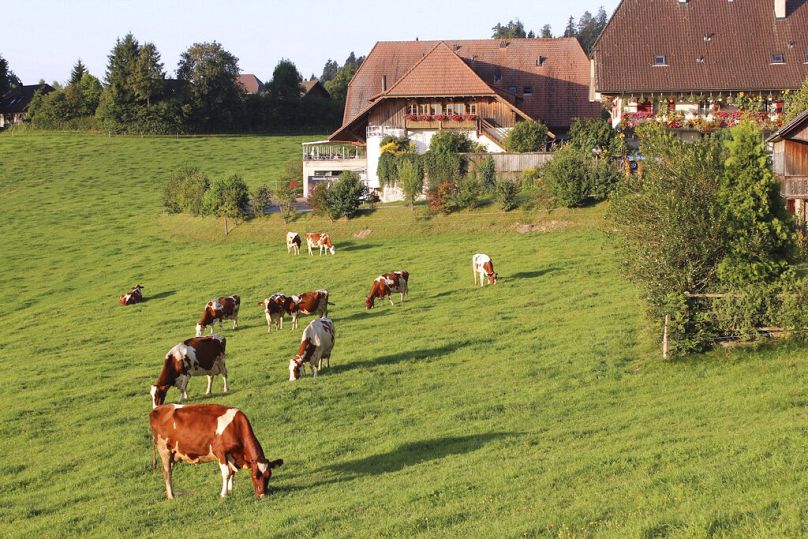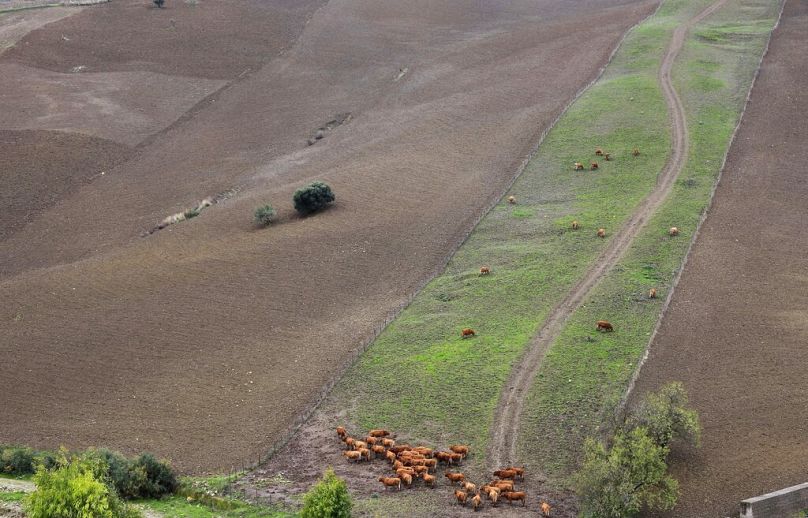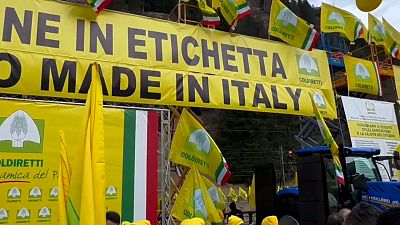Actors across the food supply chain need to be more open to experimentation and implementation of sustainability-minded farming techniques and practices, Robin Saluoks writes.
It’s not a secret that farmers and the agricultural sector are facing a huge number of overlapping environmental crises right now.
Temperature change, increasingly extreme weather events, and accelerating natural disasters threaten crop yield, soil health, the length of growing seasons, and general productivity.
These changes necessarily have profound economic effects on individual farmers and the industry at large, and that reality is only compounded by the needs of a growing global population that must be fed.
Farms and farming are an integral part of a far-reaching climate solution, but they’re also part of the problem.
The agricultural industry is a major culprit of habitat destruction and groundwater contamination, in addition to increased deforestation tied to field creation and grazing land.
But most pressing is farming’s role in greenhouse gas emissions. Food production is responsible for about 31% of total greenhouse gas emissions, and 70% of food production-related emissions are created at the farm level. This makes farmers nothing short of indispensable to reduction efforts.
The question is not whether or not it’s possible to make farming sustainable. Soil is one of the most effective natural carbon sinks on the planet. Greenhouse gas-reducing technologies and protocols have never been more sophisticated or standardised.
The real question is how to persuade farmers to adopt these technologies and tactics.
Farmers need a good reason to change how they operate
Like anyone else, farmers are rational economic actors; they’re not going to perform minor changes or major overhauls of their work and fields for idealistic or altruistic reasons alone.
In other words, farmers can’t be expected to make changes out of the mere goodness of their hearts or simply on their own individual initiative.
They need real financial incentives, comprehensive information, and reliable scientific support.
Above all, financial incentive is the most important factor — linking helping the planet with boosting profit margins should be our first tactic.
A more sustainably farmed product, for example, has the potential to be a premium product and command a higher price.
Adopting sustainable practices would open access to the growing amount of green-centric financing firms and loans that go beyond enabling the transition and help support day-to-day operations.
Carbon credits tie into this too — the right partnership brings offsetting profits.
We need to demonstrate the benefits at first hand
There also needs to be reassurance around how seamlessly sustainable methods and tech can be adopted and implemented.
Using farming land as a soil sink has no inherently detrimental effect on crop yield or available growing space, although there are always risks in bad implementation.
Adoption needs to be, at the minimum, convenient, and farmers need to be convinced of both the short- and long-term benefits.
Some of this comes down to demonstrating that there will be no depreciation in crop yield, but there’s also an argument to be made that sustainable efforts will keep their land arable for years and even generations to come.
The only way to convince farmers of the financial benefits, however, is to meet them where they are, which is to say on their farms and with on-the-ground implementation support.
Field demonstrations in their areas are crucial to showing that not only will these changes work, but that the technology needed is both actively useful and not overcomplicated.
There’s a trial-and-error aspect to all method changes, and farmers need to feel supported throughout that process, not just on day one. Farmers must be made to feel listened to, supported in their individual needs, and that there is real financial benefit.
Above all, they must feel as though the benefits outweigh the risks — the risk of wrong implementation of know-how, the risk of losing crops, or the risks of financial uncertainty throughout this process.
This is where carbon credits come in
Among the best tools at our disposal are carbon credits. Granted, carbon credits have had their fair share of bad press in recent years, with related projects failing to live up to their potential or actually sequester the correct ratio of carbon due to unreliable baselines and bad planning.
There have been cases in which a forest that was used as a carbon offsetting measure was deforested as soon as the project ended.
But that’s changing with new standardisation initiatives, and carbon credits can play a crucial role in bridging the gap between where we are now and full decarbonisation.
Carbon credits essentially work as a tradeoff. A company purchases a carbon credit that allows it to generate a certain amount of emissions, and the revenue generated by the process that creates those emissions flows to farms acting as carbon sinks and offsetting those emissions.
In short, carbon credits provide farms with real financial incentives and are tied to the proliferation of sustainability know-how and execution certainty.
Carbon credits are ready to be implemented and relatively simple to do so. It’s not difficult to imagine carbon credits as the first domino, so to speak, in incentivising farmers to try out soil sink and carbon offsetting methods. Used together with new agroforestry methods, carbon credits can even undo the negative effects of deforestation.
Although farmers are the key here, they’re also just one part of an entire ecosystem of professionals needed to make sustainable farming the norm. Actors across the food supply chain need to be more open to experimentation and implementation of sustainability-minded farming techniques and practices.
This will require collaboration among scientists, agronomists, economists, bankers, and field machinery manufacturers.
Technology, finance, science, and education must work together to make carbon credits work but also to make carbon credits the beginning of a much larger initiative. In other words, first, we convince the farmers, and then we save the planet.
Robin Saluoks is the co-founder and CEO of eAgronom.
At Euronews, we believe all views matter. Contact us at view@euronews.com to send pitches or submissions and be part of the conversation.





